#ayse humasah hanimsultan
Photo


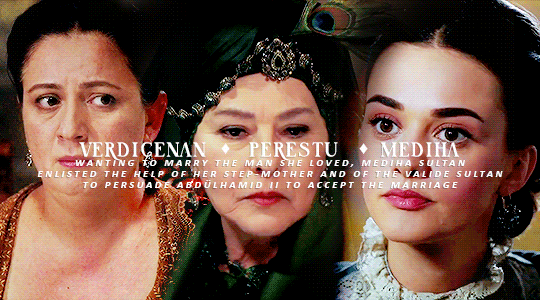




Alliances within the Ottoman Imperial harem -- requested by anon
#history#historyedit#ottoman history#safiye sultan#handan sultan#kosem sultan#halime sultan#emetullah rabia gulnus sultan#turhan hatice sultan#ayse humasah hanimsultan#verdicenan kadin#rahime perestu sultan#mediha sultan daughter of abdulmecid i#fatma sultan daughter of abdulmecid i#seniha sultan daughter of abdulmecid i#hibetullah sultan daughter of abdulhamid i#esma sultan daughter of abdulhamid i#ottomanladiesedit#*requested
327 notes
·
View notes
Note
Thanks for your last answer, buddy. But I was expecting to hear your own explanation as you are studying it for a long time. However, it is okay. Can you please tell us what is the stipend of sultanzade and hanimsultan?
Oh well, I definitely haven't studied this for longer than Leslie Peirce, who is a professor. I put her quote in my answer to you because I think that's the reason why Handan's stipend was comparably lower than Safiye's, who kept receiving 3,000 aspers a day until she died.
I don't know about Sultanzades, but Hanımsultans are a complicated matter: in general, their stipend depends on whether they're related to the reigning sultan or not, and whether they're princesses of the Enderûn (Inner palace) or Bîrûn (Outer palace).
(Enderûn means that they had lived - sometimes in their lives - in an Imperial Palace — Topkapi or the Old Palace —, Bîrûn that they had never lived in an imperial palace and were, therefore, third-generation princesses)
During Süleyman I's reign the general rule was that adult and married daughters of sultans received 200 aspers per day and granddaughters of sultans received 100 aspers, it didn't matter whether they were related to the Imperial family through their father (and were, therefore, Sultans) or through their mothers (and were Hanımsultans)
Examples:
(table is from Les Perles de Nacre du Sultanat by Juliette Dumas and is dated November 1555 - November 1556)
I know the table is in French but I think it's quite self-explanatory. For the sake of our argument, we'll take a look at the first row only: émoluments, which are the fixed stipends

Both Şehzâde and Şâh Sultan were daughters of Selim I's and therefore Süleyman I's sisters: they receive the same stipend. What is interesting is that both Ismihan Sultan and Ayşe Hanımsultan receive the same stipend: the former descends from a prince, the latter from a princess (the aforementioned Şehzâde)
(notice that Ayşe Hanımsultan is called Ayşe Sultan in harem registers. As I have said many times, Süleyman I's reign is a period of both revolution and stabilisation for women's titles)
Now onto princesses of the Bîrûn (in the same time-lapse: November 1555 - November 1556):

We're going to focus on the last three princesses. As you can see the one descending from a male has a slightly higher stipend than the two descending from a female.
The hierarchy of princesses in the XVI century was, therefore:
daughters of sultans
granddaughters of sultans
great-granddaughters descending from a male (ie. a prince)
great-granddaughters descending from a female (ie. a princess)
As you can see for Mihri Hatun, the daughter of a Hanımsultan did not have a title but still received a stipend from the Imperial treasury. Mihrî Hatun's descendants were considered complete commoners and did not have a tie to the Dynasty.
Fast forward to the beginning of the XVII century and we can see that the hierarchy has become more complex:
this table is dated May 1603 - May 1604, between Mehmed III's and Ahmed I's reigns

As you can see here, the first three princesses — Gevherhan, Ayşe and Fatma — are all daughters of sultans but Ayşe and Fatma are daughters of the reigning Valide Sultan and therefore receive a higher stipend. Dumas incorrectly identifies Gevherhan as a daughter of Murad III's with an unknown concubine but she's actually Selim II's daughter (which is why she's mentioned first after the two valide sultans— she's the eldest princess alive)
What we need to focus on — for the sake of our argument — though are the princesses I have circled: Ayşe Sultan, widow of Ahmed Paşa is actually Ayşe Hümâ-Şâh, Mihrimah's daughter. Hatice Sultan, is the daughter of Gevherhan and therefore granddaughter of Selim II.
Technically, Hatice and Ayşe Hümâ-Şâh have the same rank: they're granddaughters of sultans. So why the different stipends? Ayşe Hümâ-Şâh benefits from her mother's "aura". Mihrimah Sultan was the "greatest princess of the empire", with a lofty stipend of 600 aspers a day during Murad III's reign (when she died). For context, Safiye received 700 aspers as Haseki.
No princess would ever earn so much.
The 6 şehzâdegân (which just means 6 princes/princesses) may be Mehmed III's daughters, who were unmarried and therefore their stipends were low (in very practical terms: as they did not have a household to manage because they lived in a room inside Topkapi, they didn't need a higher stipend)
The hierarchy of princesses at the beginning of the XVII century was, therefore:
princesses born from the haseki sultan who subsequently became valide sultan
the other princesses, born from non-haseki concubines
granddaughters who benefit from their mothers' rank
the other granddaughters
great-granddaughters
As Dumas concludes:
Contrary to the Ottoman principle of blood transmission, which (officially) only takes into account the paternal lineage, the importance of mothers predisposes their daughters to a certain preponderance over their half-sisters. The hierarchy also tends to produce a stronger distinction between daughters and granddaughters (between sultans or hanım sultans) and the third generations, put a little jumbled up in a sub-category that annihilates any individual specificity.
If you're interested, this is what a harem register looked like:
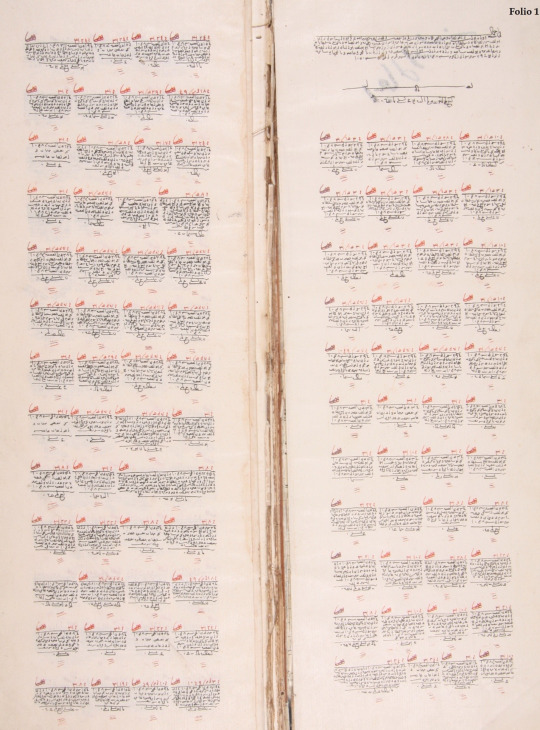
In the XVI century, the stipend of Şehzades was 100 aspers when they resided in the Palace. I guess the stipend of Sultanzades paralleled those of Hanımsultans.
#ask post#ask: ottoman history#ottoman harem#ayse humasah hanimsultan#sehzade sultan daughter of selim i#sahihuban sultan daughter of selim i#gevherhan sultan daughter of selim ii#ayse sultan daughter of murad iii#fatma sultan daughter of murad iii#kadinlarsaltanati
40 notes
·
View notes
Note
What kind of lives and careers would the nephews of Sultans live out? By that I mean the sons of princesses. Who would they usually marry? While their children weren’t considered official royal family members, could they expect any special esteem among the Ottoman aristocracy? There were so many of them lol.
Sultanzades usually pursued either a military career (several of Suleyman I's nephew and uncles were army generals) or a career in the provinces as governors.
We don't have much information about the wives of sultanzades. There are exceptions, of course:
Ayşe Hümâ-Şâh's grandson Mahmud Paşa — who is not technically a sultanzade but just a descendant — married a daughter of Mehmed III, therefore becoming a damad
Sultân-zâde Dâmâd Mehmed Çelebî (son Fatma Sultan, daughter of Bayezid II) married his cousin, Ayşe Sultan (daughter of Şehzâde Alem-şâh)
Sultân-zâde Mehmed Paşa (son of Gevher-mülük sultan, daughter of Bayezid II) married his cousin, Ayşe Hân-zâde Mihr-i Hân Hanım-Sultân (daughter of Ayşe Sultan, daughter of Bayezid II)
Sultân-zâde Yahyâpaşa-zâde Gaazî Küçük Balı Paşa (yes, MC!Bali Bey) (son of Şâh-zâde sultân, daughter of Bayezid II) married his cousin Hân-zâde Hanım-Sultân (daughter of Aynişâh sultân, daughter of Bayezid II)— not only that, but Aynişâh sultân herself was married to a Sultanzade, Göde Ahmed Bey, the son of Mehmed II's daughter Gevherhan
Sultân-zâde Mehmed Bey (son of a daughter of Bayezid II's) married one of Selim I's daughters, Gevherhan Sultan
Hümâ-Şâh Sultân's son Sultân-zâde Sokollu-zâde ‘Abdülbâkî Bey married Safiyye Hanım-Sultân, the daughter of Ismihan Sultan and Sokollu Mehmed Paşa
Sultanzades could also have married daughters of pashas, though if they didn't contract a dynastic marriage we don't have a record of their wives. Sultân-zâde İbrâhîm Hân /Paşa (another son of Ismihan Sultan) had descendants until the XX century and one of his descendants married a daughter of Mehmed V's but that's the only wife we know about for four centuries.
By the way, yes, sultanzades' offspring weren't titled but were considered part of the élite anyway and a marriage with them was advantageous.
#ask post#ask: ottoman history#ayse humasah hanimsultan#humasah sultan daughter of sehzade mehmed#aynisah sultan daughter of bayezid ii#ismihan sultan daughter of selim ii#gevherhan sultan daughter of selim i#buffyboleyn
30 notes
·
View notes
Photo





Ottoman Princesses named: Saliha
Saliha is a name of Arabic which means virtuous, pious or devoted to God.
#history#historyedit#ottoman history#ayse humasah hanimsultan#saliha sultan daughter of ahmed iii#saliha sultan daughter of abdulhamid i#saliha sultan daughter of mahmud ii#saliha sultan daughter of abdulaziz#ottomanladiesedit#princessesnames
167 notes
·
View notes
Note
hello! Hope you are doing well! I have seen in your post somewhere that Mihrimah"s daughter is accorded "Sultan" title by Suleiman himself. Is there any documentary evidence of it? Thanks!
Well, yes, as Süleyman was the only one who could accord titles.
The documentary evidence is in the Vakıflar Genel Müdürlüğü Arşivi (the Foundations Archive) where Ayşe Hümaşah is listed as Ayşe Sultan in relation to her foundations, I guess. In harem registers, she was listed as Ayşe Sultan as well.
14 notes
·
View notes
Photo










Ottoman Princesses named: Ayşe
Ayşe is the Turkish equivalent of the Arabic name A'isha, famous for being the name of the youngest wife of Prophet Muhammad. It is one of the most common names among Ottoman princesses and consorts.
#history#historyedit#ottoman history#ayse hatun daughter of mehmed i#ayse sultan daughter of bayezid ii#ayse humasah hanimsultan#ayse sultan daughter of murad iii#ayse sultan daughter of mehmed iii#ayse sultan daughter of ahmed i#ayse sultan daughter of ibrahim i#ayse sultan daughter of mustafa ii#ayse sultan daughter of ahmed iii#ayse durrusehvar hanim daughter of abdulhamid i#ayse sultan daughter of abdulhamid ii#durrusehvar sultan daughter of abdulmecid ii#ottomanladiesedit#princessesnames
1K notes
·
View notes
Photo


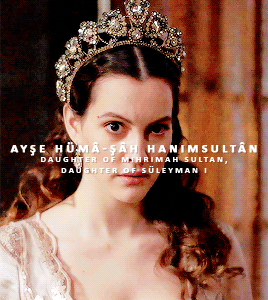
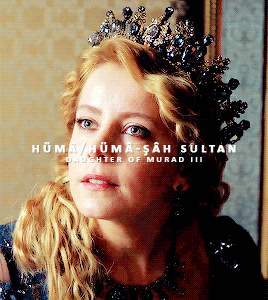
Ottoman Princesses named: Hümâ-Şâh
"Hümâ-Şâh is a compound name of Persian origins: Hümâ is a bird from Persian mythology and may be translated as lucky bird or phoenix. It is also used alone as a name. Şâh is the Persian title of rulers."
#historyedit#history#humasah sultan daughter of sehzade mehmed#ayse humasah hanimsultan#humasah sultan daughter of murad iii#hundi sultan daughter of bayezid ii#ottomanladiesedit#princessesnames
234 notes
·
View notes
Note
One more question. What is the relation between Mihrimah and Safiye during all the time? Is there any detail about them? Thank you.
According to the French ambassador Germigny, Ayşe Hümâ-Şâh (and her husband Semiz Ahmed Paşa) and Safiye formed a political faction opposite to Nurbanu's during Murad III's reign.
Unfortunately, I don't know whether Ayşe Hümâ-Şâh was following her mother's path or not.
#ask post#ask: ottoman history#ayse humasah hanimsultan#safiye sultan#mihrimah sultan#kadinlarsaltanati
8 notes
·
View notes
Note
Hey! Love your blog! I just saw your what I love about her gifsets and one of the things you said about Kosem stuck out to me. Her closeness with Kaya, her granddaughter, and that she treated Kaya like one of her own daughters. Was it not normal for grandmothers in the sultanate of women to be close to their granddaughters? I thought I read something somewhere about Hurrem’s being close with Mehmed and Mihrimah’s daughters but was she close to Bayezid and Selim’s daughters? Was Nurbanu close to her granddaughters or was it more complicated because of her relationship with Safiye?
I mean, those gifsets are not about something that is exclusive to that particular woman or anything like that. My intention wasn't to say that only Kösem was close to her granddaughter.
I imagine all of them were, some more some less. Among their duties as the dynasty elder was to take care of their grandchildren and see that everything in their upbringing goes smoothly. Also arranging marriages between princesses is something that pertained to the Valide Sultan (though sometimes they would clash with the princesses' mothers— Kaya's mother had another candidate for her hand in mind but in the end Kösem won)
As far as I know, nothing suggests that Hürrem was close to Selim's and Bayezid's daughters, also because they didn't live in Istanbul. Of course she used to routinely visit her sons in their provincial posts but it wasn't the same thing: both Nurbanu and Bayezid's consorts lived quite freely in the princely harems of Selim and Bayezid. Hümâ-Şâh (Mehmed's daughter) and Ayşe Hümâ-Şâh (Mihrimah's daughter) both lived in Istanbul - the former in the Old Palace and the latter with her parents - so it seems to me quite natural that Hürrem developed a closeness to them.
I don't know how close Nurbanu was to Safiye's daughters because they too were exiled to the Old Palace when their mother was, which is quite interesting since they were basically adults at that point and they must have had their own households. I quite doubt that they still lived in Safiye's apartments. Still, Murad III told them to go with their mother (maybe because they were unmarried? idk)
#anon#ask post#ask: ottoman history#kosem sultan#kaya ismihan sultan daughter of murad iv#haseki hurrem sultan#safiye sultan#nurbanu sultan#ayse sultan daughter of murad iii#fatma sultan daughter of murad iii#ayse humasah hanimsultan#humasah sultan daughter of sehzade mehmed#Anonymous
17 notes
·
View notes
Note
Is Ayse Humasah the only one who received the title of sultana?
No, she wasn’t. These are all granddaughters of sultans, from Bayezid I to Süleyman I. As you can see there were exceptions.

The sources Dumas used are all contemporary documents.
#anon#ask post#ask: ottoman history#ayse humasah hanimsultan#humasah sultan daughter of sehzade mehmed#Anonymous
13 notes
·
View notes
Note
Lots of love! I am reading all of your posts as far as I can! I have a question. Can you please write about Ayshe Humashah Sultan and Safiye Hanim Sultan during Nurbanu Walide Sultan and Safiye Hasseki Sultan's time? What was their impacts on harem politics? I am very eager to know how these influential women have impacts on dynasty politics still they dont stay in Topkapi palace! Isn't it interesting? Again I am a MC & MCK lover! :D
Unfortunately I don’t know what they did. This is what Kayaalp-Aktan says about it:
The French ambassador Germigny remarks that Safiye Sultan, along with Ayşe Hümaşah Sultan, daughter of Mihrümah and Rüstem and wife of Second Vizier (Semiz) Ahmed Pasha, constituted a second coalition (Negotiations de la France dans le Levant, vol. III - Correspondance de Jacques de Germigny, in Spagni, “Sultana Veneziana,” 296)
I don’t have Spagni’s work so unfortunately the page indication is useless to me. I wish she had included the page of the actual source, which is the French one.
6 notes
·
View notes
Photo

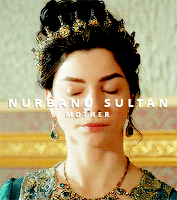





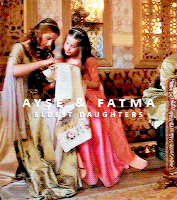

Murad III of the Ottoman Empire + the women in his life
#history#historyedit#ottoman history#murad iii#nurbanu sultan#safiye sultan#mihrimah sultan#sah sultan daughter of selim ii#ismihan sultan daughter of selim ii#gevherhan sultan daughter of selim ii#humasah sultan daughter of sehzade mehmed#ayse humasah hanimsultan#canfeda hatun#raziye hatun#semsiruhsar hatun#ayse sultan daughter of murad iii#fatma sultan daughter of murad iii#ottomanladiesedit#*womeninlife
715 notes
·
View notes
Note
Although some sources state that the year of Ayse Humasah Sultan's death was 1595, Juliette Dumas writes in her book (Les perles de nacre du sultanat Les princesses ottomanes (mi-XVe – mi-XVIIIe siècle) that Ayse Humasah Sultan received 150 aspres in May 1604, so she died at least in 1604 or 1605. what is your opinion?
I have noticed it too.

I also have noticed that she is indicated as the widow of Ahmed Pasha, which I found strange because she had married Şeyh ‘Azîz Mahmûd Hüdâyî Efendi in 1583 (or around that time); since this particular harem register is dated May 1603 - May 1604, shouldn't she have been indicated as the wife of Şeyh ‘Azîz Mahmûd Hüdâyî Efendi? On the other hand, Dumas never acknowledges that Ayşe Hümâ-Şâh married him; she calls her a "fervent follower of Mahmud Efendi". In her family tree, only her first two husbands are shown (both were called Ahmed).
Also, not to discredit Dumas completely, but she identified the widow of Cerrah Mehmed Paşa as one of Murad III's lesser-known daughters, when in fact she was Gevherhan Sultan, Murad III's sister. That is one of the most glaring mistakes I have found in her dissertation. I'm not saying it invalidates everything else, but it kind of makes me suspicious.
In any case, it is certainly possible that Ayşe Hümâ-Şâh was alive in 1604; that would have made her around 60, I think.
6 notes
·
View notes
Photo








Ayşe Hümâ-Şâh Hanım-Sultân was the eldest child of Ottoman princess Mihrimah Sultan and Grand Vizier Dâmâd Rüstem Paşa, and possibly Süleymân I and Hürrem Sultân’s first grandchild, being born in or around 1541.
Around 1557, she married Semiz Ahmed Paşa, future Grand Vizier, and with him had at least 8 children: Sultanzade Hakani Mehmed Bey (d. 1593), Sultanzade Mustafa Şehid Paşa (d. 20.6.1593), Sultanzade Osman Bey (d. 1591), Sultanzade Abdurrahman Bey (d. 1595/1597), (Saliha) Hanım-Sultân (d. 1580), Safiye Hanım-Sultân, (Hatice) Hanım-Sultân and (Ayşe) Hanım-Sultân.
On 6 April 1582, she married Ahmed Ferîdûn Paşa inside the Ibrahim Paşa Palace, but the marriage lasted only 11 months because the paşa died on 16 March 1583. She subsequently married Şeyh ‘Azîz Mahmûd Hüdâyî Efendi, a famous mystic, poet, composer and Ahmed I and Osman II’s şeyh.
Ayşe Hümâ-Şâh was politically active, being the wife of a Grand Vizier and the daughter of “the greatest princess”, Mihrimah Sultan. She was also her mother’s only heir, and not only did she inherit her vast wealth (including 5 palaces) but her pious foundations as well, which were then transmitted to her sons, per Mihrimah’s will. Probably following her mother’s path, she was close to Safiye Sultan’s faction during the reign of Murad III.
She died in 1594 and was buried in the complex dedicated to her third husband, Şeyh ‘Azîz Mahmûd Hüdâyî Efendi, in Üsküdar, near the mosque of her mother Mihrimah Sultan. // Emel Çölgeçen as Ayşe Hümâ-Şâh
sources: Juliette Dumas, Les perles de nacre du sultanat; Yılmaz Öztuna, Kanuni Sultan Süleyman
419 notes
·
View notes
Photo








friendships in the imperial harem
#history#historyedit#ottoman history#safiye sultan#esther handali#ayse humasah hanimsultan#atike sultan daughter of ahmed i#turhan hatice sultan#mahidevran hatun#hatice sultan daughter of selim i#sazkar hanim#peyveste hanim#leyla açba#nevvare hanim#safiye unuvar#dilfirib kadin#haseki hurrem sultan#gulfem hatun#some of them are a little... eh but i needed 8 so
2K notes
·
View notes
Photo



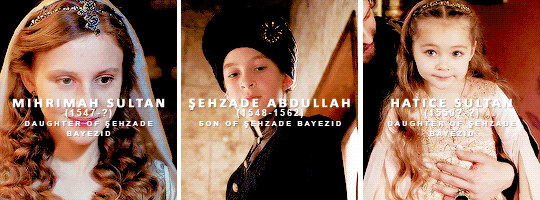




Hürrem Sultan + known grandchildren
#history#historyedit#ottoman history#ottomanladiesedit#ayse humasah hanimsultan#sultanzade osman bey son of mihrimah sultan#humasah sultan daughter of sehzade mehmed#sah sultan daughter of selim ii#ismihan sultan daughter of selim ii#gevherhan sultan daughter of selim ii#fatma sultan daughter of selim ii#mihrimah sultan daughter of sehzade bayezid#ayse sultan daughter of sehzade bayezid#hanzade sultan daughter of sehzade bayezid#hatice sultan daughter of sehzade bayezid#murad iii#long post
1K notes
·
View notes